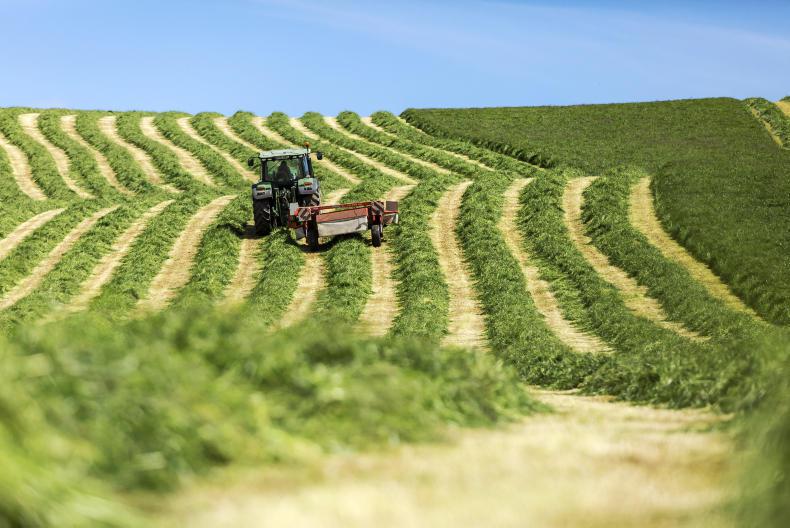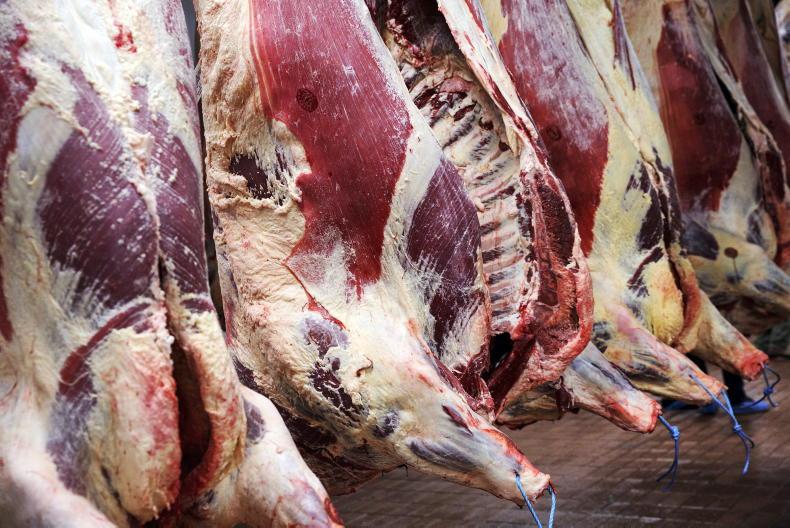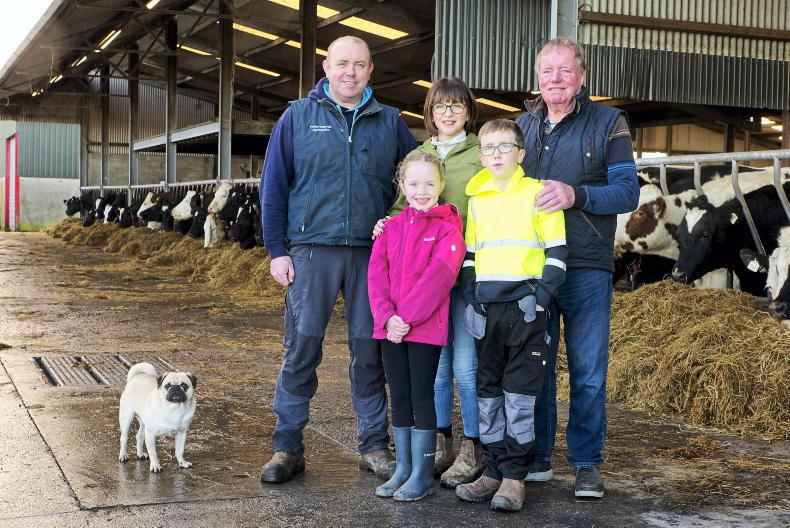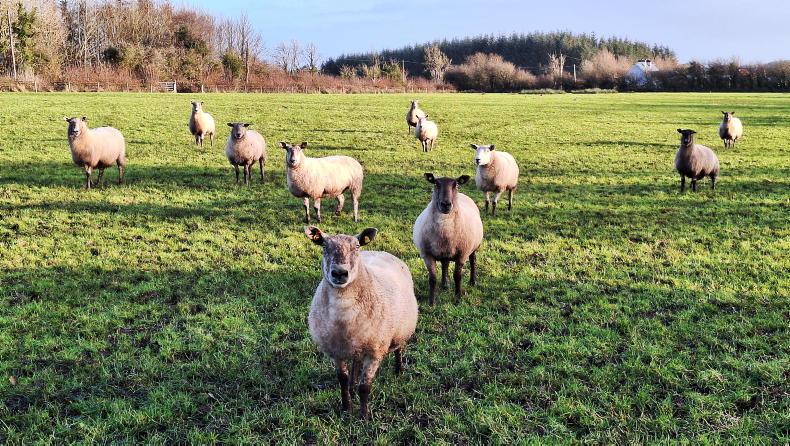Silage: The weather forecast is mixed and many farmers are behind on getting silage made.
When it comes to silage, yield is the enemy of quality. For most spring-calving herds, the main first cut doesn’t need to be excellent quality and so they should be veering more towards yield over quality. But for those milking over the winter, or fattening cattle, quality will trump yield for a good portion of the silage made. Even spring-calving farmers need about 20% of their silage to be high quality for feeding out at the shoulders of the year.
Because grass growth has been poor for the last few weeks, but is now improving, there could be a big uptake of nitrogen in the grass so it would be important to get nitrate levels checked before cutting.
Teagasc offices and agri-merchants offer a testing service for sugars and nitrates. A good wilt will overcome high nitrates, but it’s hard to get a good wilt if the weather is broken. Leaving the grass to wilt in a 10ft swarth and tedding out will speed up wilting time. If the dry matter is low, the pH in the silage will be low and there will be a lot more effluent out of the pit. Sugar levels are critical and will be highest in sunny weather and in ryegrass swards.
Additives are usually not necessary. Innoculants may help in very young leafy grass that has low sugar content, but won’t make bad silage good. Molasses will be more beneficial in bad weather as it increases sugar content. Acids will be good too but because they are corrosive most contractors don’t use them. Keep farm safety in mind when at silage.
Calves: Target weight for youngstock is governed by their mature weight. In other words, not all heifers should be at the same target weight now as not all will weigh the same when mature. The most accurate way to calculate target weight for calves is to use the maintenance sub-index in the EBI as an indicator of what the mature liveweight will be. A cow with a maintenance sub-index of €0 should weigh around 640kg and every €1 in EBI for maintenance equals around 5kg in liveweight. So a group of calves with an average EBI for maintenance of €12 would have an expected mature liveweight of 580kg.
Target weight for February-born calves is 23% of mature liveweight by June. In the above example, the calves should be weighing 133kg in June. Best policy is to weigh the calves and split them up into groups depending on their weight relative to target. Those on target can get away without any nuts for the summer, just good grass. Those below target may need nuts and good grass. It’s still early for worms to be a problem but keep an eye on performance and if in doubt get some dung samples taken for analysis.
Bloat: I’m hearing of some cases of bloat over the past week, most of which occurred in fields that were not high in clover. Hungry cows eating lush grass is high risk for bloat. Treatment needs to be instant as it can put fierce pressure on the cow’s organs. Best policy is to relieve the bloat by drenching with bloat oil or paraffin oil, using a stomach tube or stabbing the cow with a trocar and cannula.
Silage: The weather forecast is mixed and many farmers are behind on getting silage made.
When it comes to silage, yield is the enemy of quality. For most spring-calving herds, the main first cut doesn’t need to be excellent quality and so they should be veering more towards yield over quality. But for those milking over the winter, or fattening cattle, quality will trump yield for a good portion of the silage made. Even spring-calving farmers need about 20% of their silage to be high quality for feeding out at the shoulders of the year.
Because grass growth has been poor for the last few weeks, but is now improving, there could be a big uptake of nitrogen in the grass so it would be important to get nitrate levels checked before cutting.
Teagasc offices and agri-merchants offer a testing service for sugars and nitrates. A good wilt will overcome high nitrates, but it’s hard to get a good wilt if the weather is broken. Leaving the grass to wilt in a 10ft swarth and tedding out will speed up wilting time. If the dry matter is low, the pH in the silage will be low and there will be a lot more effluent out of the pit. Sugar levels are critical and will be highest in sunny weather and in ryegrass swards.
Additives are usually not necessary. Innoculants may help in very young leafy grass that has low sugar content, but won’t make bad silage good. Molasses will be more beneficial in bad weather as it increases sugar content. Acids will be good too but because they are corrosive most contractors don’t use them. Keep farm safety in mind when at silage.
Calves: Target weight for youngstock is governed by their mature weight. In other words, not all heifers should be at the same target weight now as not all will weigh the same when mature. The most accurate way to calculate target weight for calves is to use the maintenance sub-index in the EBI as an indicator of what the mature liveweight will be. A cow with a maintenance sub-index of €0 should weigh around 640kg and every €1 in EBI for maintenance equals around 5kg in liveweight. So a group of calves with an average EBI for maintenance of €12 would have an expected mature liveweight of 580kg.
Target weight for February-born calves is 23% of mature liveweight by June. In the above example, the calves should be weighing 133kg in June. Best policy is to weigh the calves and split them up into groups depending on their weight relative to target. Those on target can get away without any nuts for the summer, just good grass. Those below target may need nuts and good grass. It’s still early for worms to be a problem but keep an eye on performance and if in doubt get some dung samples taken for analysis.
Bloat: I’m hearing of some cases of bloat over the past week, most of which occurred in fields that were not high in clover. Hungry cows eating lush grass is high risk for bloat. Treatment needs to be instant as it can put fierce pressure on the cow’s organs. Best policy is to relieve the bloat by drenching with bloat oil or paraffin oil, using a stomach tube or stabbing the cow with a trocar and cannula.










SHARING OPTIONS